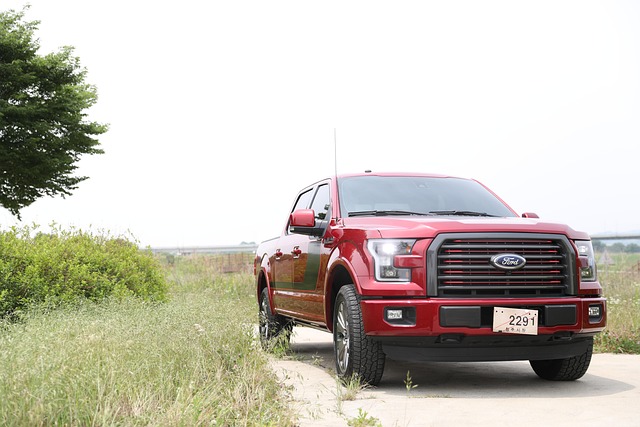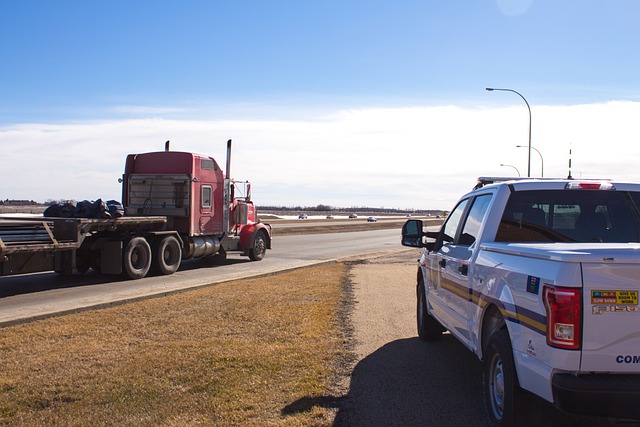Looking to register your car in California? This comprehensive guide walks you through the entire process, ensuring a smooth experience. From understanding key requirements to gathering essential documents and completing DMV procedures like VIN verification, you’ll be on your way to securing your vehicle’s registration. We’ve broken down each step for a straightforward approach, making car registration in California accessible and hassle-free.
- Understand California Car Registration Requirements
- Gather Necessary Documents for DMV Visit
- Perform Vehicle Identification Number (VIN) Verification
- Complete Application and Payment at DMV Office
- Receive Your California Registration Plate and Documentation
Understand California Car Registration Requirements

Before registering your car in California, it’s crucial to understand the state’s specific requirements. The California Department of Motor Vehicles (DMV) mandates several key steps for car registration, including a thorough vehicle inspection and verification of the Vehicle Identification Number (VIN). This process ensures that all vehicles on California roads meet safety and environmental standards. One essential aspect is the accurate reporting of your vehicle’s details, such as its make, model, and year, to facilitate the DMV’s VIN verification.
The unique VIN serves as a fingerprint for your car, providing critical information about its history and specifications. For a seamless registration experience, many residents opt for convenient mobile vin verification services. These mobile vin verifiers offer on-demand inspections and reports, allowing you to complete the necessary paperwork with ease. Whether you choose a traditional or mobile vin inspection, ensuring your car’s compliance with California standards is paramount before initiating the registration process.
Gather Necessary Documents for DMV Visit

Before heading to the California Department of Motor Vehicles (DMV), ensure you gather all the essential documents required for car registration. This includes your vehicle’s registration certificate from the previous state, proof of insurance, and a valid driver’s license. Additionally, you’ll need the Vehicle Identification Number (VIN) verification report, which can be obtained through a mobile vin inspection or by visiting a local DMV office.
A crucial step in the process is to verify the VIN at the DMV using their system. This is typically done during your visit and ensures that your vehicle’s details match the records. You can simplify this task by availing of a mobile vin verifier, which allows for a quick and convenient inspection before you arrive at the DMV. This way, you’ll save time and avoid any potential delays or complications.
Perform Vehicle Identification Number (VIN) Verification

Before registering your car in California, it’s crucial to ensure that your vehicle’s identification number (VIN) is valid and matches the make, model, and year listed on your documents. This process, known as VIN verification, is typically performed by visiting a DMV office or using an approved mobile vin inspection service. Many California residents opt for a mobile vin verifier to save time and effort, allowing them to verify their car’s details from the comfort of their home or workplace.
During the VIN verification process, you’ll need to provide your vehicle’s unique 17-character code, which can be found on the vehicle identification plate or in your car’s registration documents. A reliable mobile vin inspection service will cross-reference this information with state databases to ensure accuracy. This step is essential as it helps prevent fraud and ensures that only legitimate vehicles are registered, protecting both you and other California drivers from potential safety risks associated with unregistered or altered vehicles.
Complete Application and Payment at DMV Office

Once you have gathered all the required documents, it’s time to visit your local California Department of Motor Vehicles (DMV) office for a smooth car registration process. At the DMV, you’ll need to complete two key steps: filling out the application and making the necessary payments. Ensure that you bring along your vehicle’s title, valid identification, proof of insurance, and any other required documents as outlined by the DMV.
When completing the application, it’s crucial to accurately enter your vehicle’s information, including the Vehicle Identification Number (VIN). The DMV conducts a VIN verification process to ensure the vehicle’s details match the records. You can facilitate this by using a mobile vin verifier or undergoing a simple vin inspection to have the VIN decoded and verified before submitting your application. This step ensures that everything is in order, leading to a faster and more efficient registration experience.
Receive Your California Registration Plate and Documentation

After completing your vehicle’s purchase, it’s time to receive your California registration plate and associated documentation. This process involves a few key steps, starting with verifying the Vehicle Identification Number (VIN). In California, this is typically done through a DMV VIN verification, ensuring that the car matches the details on record. You can opt for a traditional vin inspection at a designated location or explore more convenient options like mobile vin verification services, which allow you to complete the process from the comfort of your own home or garage.
Once verified, you’ll receive your registration plate and essential papers, including a certificate of registration. Keep these documents secure and handy for future reference, as they’re required for vehicle-related transactions such as insurance claims, title transfers, or even routine smog checks.
Registering a car in California involves understanding specific requirements, gathering essential documents, and completing a simple process at the Department of Motor Vehicles (DMV) office. After performing a mandatory Vehicle Identification Number (VIN) verification to ensure the vehicle’s authenticity, you’ll fill out an application, make the necessary payment, and receive your California registration plate and corresponding documentation. Remember to keep these records up-to-date for smooth driving in the Golden State.
